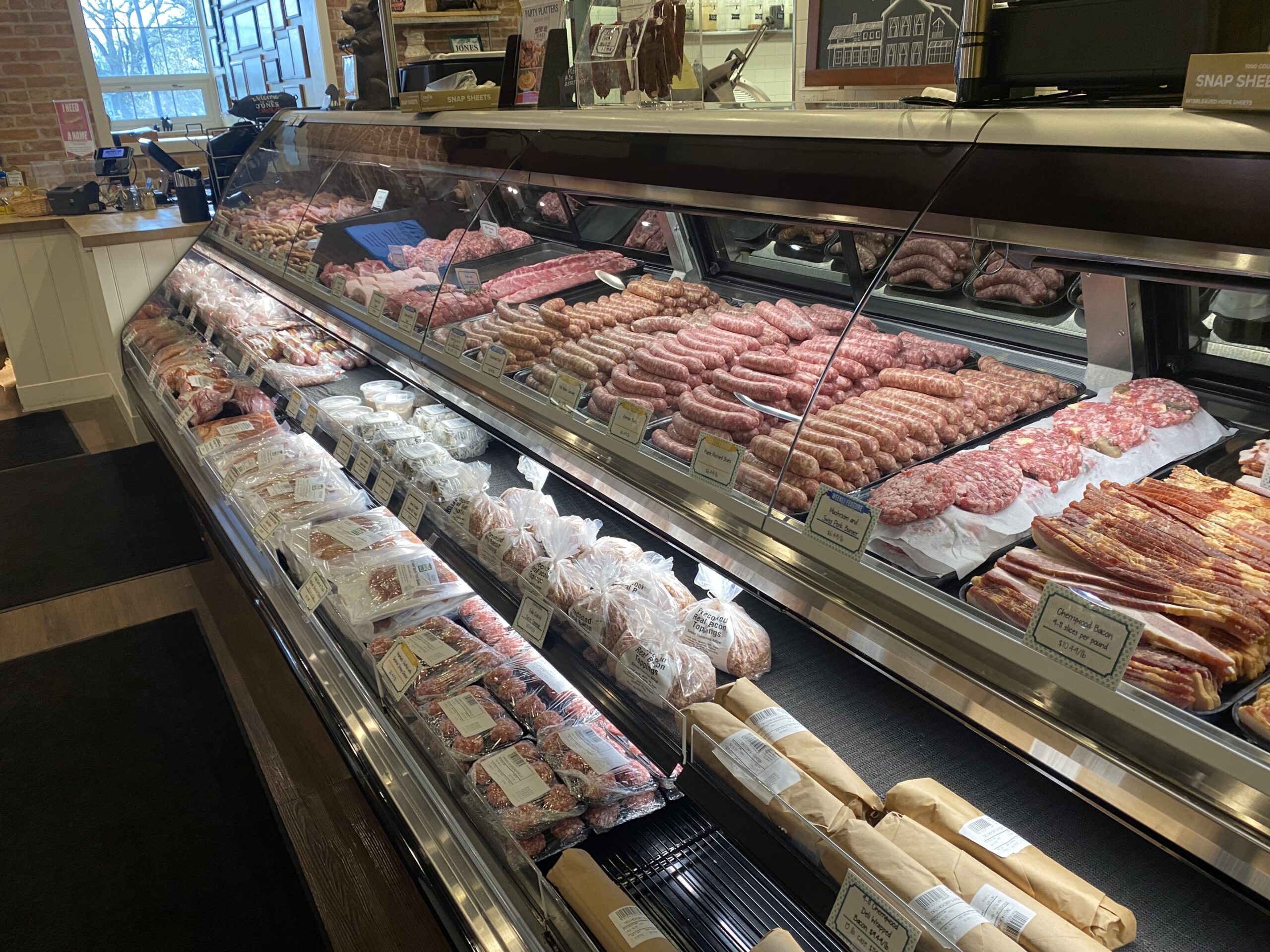Why Citizens Love Bagley Farms Meat Market Edwardsville IL for Their Meat Shopping
Why Citizens Love Bagley Farms Meat Market Edwardsville IL for Their Meat Shopping
Blog Article
Discover the Art of the Butcher's Cut in a Modern Meat Market
In the ever-evolving landscape of modern-day meat markets, the butcher's cut has actually transcended its conventional roots, merging old-time workmanship with modern techniques. Today's butchers are not just processors of meat; they are educated artisans that stress sustainability and ethical sourcing. Their expertise in choose and preparing cuts customized to specific cooking demands provides an unrivaled dining experience. What absolutely sets the modern butcher apart is their capacity to create a much deeper link between consumers and the beginnings of their meat. Exactly how do these masters equilibrium custom with development, and what effects does this have for the future of meat consumption?
Development of Butchery Techniques
The advancement of butchery methods shows an abundant tapestry of technology and adaptation driven by developments in modern technology, changes in consumer need, and a deeper understanding of meat science. Historically, butchery was a craft gave via generations, with methods honed over centuries to optimize yield and taste. Nevertheless, the commercial revolution introduced mechanization, transforming standard techniques and allowing massive processing.
The mid-20th century saw butchery techniques additionally fine-tuned by scientific understandings into muscle mass biology and meat aging, improving both inflammation and preference. Technologies like vacuum cleaner packaging and refrigeration extended item shelf-life, allowing butchers to branch out offerings and improve quality assurance. This period also noted the rise of customized equipment, such as band saws and meat slicers, which raised accuracy and effectiveness in meat processing.

Digital systems now help in tracking pet provenance and enhancing cuts to fulfill certain customer choices. Furthermore, a revival in artisanal butchery has emerged, mixing traditional abilities with modern knowledge to provide to customers seeking ethical and sustainable meat alternatives.
Recognizing Meat Cuts
Comprehending the complexities of meat cuts is important for both butchers and consumers looking for top quality and value. For butchers, exact cuts mirror skill and respect for the craft, making certain marginal waste and optimum return.

Understanding muscular tissue structure is important; muscles made use of extra regularly by the animal tend to be tougher and are best matched for slow cooking methods, while less-used muscular tissues, like those found in the loin, are more tender and suitable for grilling or roasting. Knowledge with these distinctions encourages customers to make informed selections, boosting their culinary endeavors.
Picking Top Quality Meat
Choosing the ideal meat entails even more than simply choosing an aesthetically enticing piece from the display screen. bagley farms meat market edwardsville il. The art of picking top quality meat calls for a critical eye and understanding of details characteristics that indicate quality and excellence. Pay focus to the color; beef should have a brilliant, cherry-red tone, while lamb ought to display a soft pink tone, and pork a light pink. This suggests the meat is fresh and hasn't been exposed to oxygen for also lengthy.
Second of all, think about the marbling, which refers to the white streaks of fat within the muscle. Appropriate marbling recommended you read is a crucial indicator of inflammation and flavor, as it thaws throughout cooking, improving the meat's juiciness. Keep in mind, higher marbling often associates with exceptional quality cuts, such as USDA Prime.
Appearance is another vital variable; meat needs to feel strong to the touch, not slimy or excessively soft. Furthermore, be conscious of the scent. Fresh meat needs to have a tidy, neutral scent, cost-free from any sour or off-putting smells.
Matching Cuts With Food Preparation Approaches

Alternatively, harder cuts like brisket and chuck roast are abundant in collagen, which damages down into jelly when prepared slowly. These cuts are suitable for braising or slow roasting, enabling the meat to soften over time and develop deep, intricate flavors. In a similar way, cuts such as short ribs and pork shoulder prosper with slow-cooking approaches, where extended cooking times change their robust appearances into succulent recipes.
Lamb shanks and oxtail, which need prolonged cooking to tenderize, are ideal candidates for cooking or slow simmering. These approaches coax out abundant, passionate flavors while keeping wetness. By recognizing the one-of-a-kind qualities of each cut, chefs and home chefs alike can raise their cooking creations, ensuring each meal is both pleasing and remarkable.
The Butcher's Duty Today
Browsing the progressing landscape of the modern-day meat market, the butcher's function today extends beyond plain prep work of cuts. Contemporary butchers are cooking artisans, teachers, and supporters for lasting methods.
In enhancement to crafting precise cuts, butchers now involve straight with customers, offering cooking guidance and customizing selections to match individual requirements and preferences. Their knowledge in meat aging, marbling, and flavor accounts empowers customers to make educated decisions, boosting their cooking experiences. This individualized solution exhibits the butcher's developing function as my blog a trusted expert in the kitchen.
Additionally, butchers are pivotal in decreasing waste, making use explanation of entire pets to produce diverse items such as sausages and supplies. This detailed approach not just appreciates the animal yet likewise straightens with modern sustainability goals. In this way, the modern-day butcher symbolizes both practice and technology, adapting to an ever-changing market while preserving the creativity and integrity of their craft.
Conclusion
Proficiency in comprehending varied meat cuts and top quality indications equips butchers to supply educated suggestions, aligning particular cuts with optimal cooking methods. By honoring historic techniques while embracing contemporary needs, the butcher's duty continues to be essential in today's innovative meat market.
Report this page